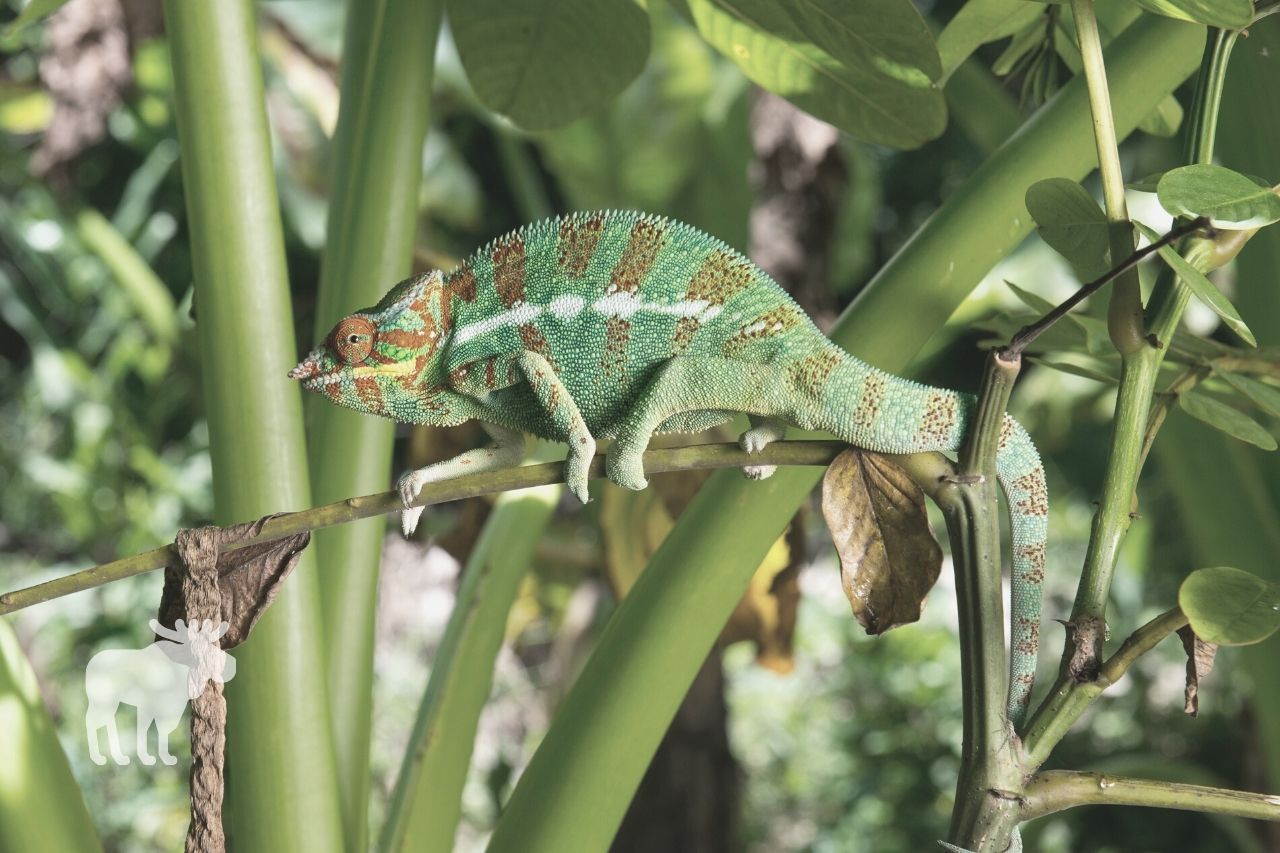If you’ve ever seen a chameleon up close, you probably recognized it immediately. Chameleons are highly distinctive lizards with many unique appearances and characteristics they have developed over time. They live in many different parts of Africa, but they are also kept as pets throughout the world. So, you may be wondering, how does a chameleon adapt to its environment? Keep reading! In this article, we’ll explore the answer to this question.
What You'll Learn Today
What are the Adaptations of a Chameleon?

Chameleons have developed many unique adaptations over time. These adaptations help them to survive in many different ways.
Let’s take a closer look at some of these adaptations and explore the ways in which they help chameleons survive.
Color Changing Ability
One of the most notable physical features of a chameleon is its ability to change its skin color. While it is commonly thought that chameleons change color to become “invisible” against their surroundings, this isn’t entirely true.
Chameleons can blend in with their surroundings, but they don’t necessarily become invisible. They won’t necessarily take on the exact colors of their surroundings; in fact, there are times they change colors in order to stand out from their surroundings.
So, how exactly do chameleons change color?
Their skin cells contain pigments of melanin that can produce various colors. Chameleons can cause these melanin pigments to spread out and gather back together, which causes them to become different colors and shades.
But this is only part of it.
In addition to the melanin pigments, chameleon skin contains unique, microscopic crystals which actually reflect light, causing different colors depending on how close or spread out they are.
A combination of these pigments and crystals, as well as the chameleon’s ability to move them around in the skin, helps the chameleon to change color.
Chameleons have some control over which colors they turn; when they are feeling excited, threatened, or attempting to attract a mate, they turn bright colors such as red, orange, and yellow; when they are calm and at rest, they turn calmer colors like green and tan.
Chameleons change colors to blend with their surroundings as well as to stand out; they will do it to attract mates and scare off other males.
In addition, they will also change colors to reflect sunlight and heat, thereby controlling heat absorption in their bodies.
Check out this video to learn more about how chameleons change color:
Independent Eye Movement
Chameleon’s eyes move independently of each other and can rotate 360 degrees. Of course, this is a pretty cool characteristic, but how does it help them adapt to their environment?
It allows them to see two different things at once–one image in the left eye, the other in the right eye. Since each eye has a 360 degree view, chameleons can basically see what’s going on all around them at all times, without blind spots.
They also have the ability to focus both eyes on a single object, allowing them to see it more clearly and hone in on its location.
This incredible eye movement helps them with hunting, as they can easily track even fast-moving insects anywhere around them, pinpoint their exact location, and catch them with their long, sticky tongues when the insects get close enough.
What’s more, chameleons have extra-protective eyelids that keep their eyes safe. Using these eyelids, they can cover most of their eyes while leaving the pupils exposed, allowing them to see while keeping most of the eye hidden and protected.
Hood
According to Sciencing, some species of chameleon have developed a special hood on their heads. This hood has allowed them to adapt to their environment in a couple of different ways.
First, the hood acts as a water collection tool. Chameleons often live in dry environments, so they stay hydrated by drinking the dew which collects in their hood and runs down to their mouth.
What’s more, males with larger hoods appear to be more appealing to females. Large, impressive hoods also allow them to intimidate and scare off other males competing for the same female.
This is an example of natural selection, as it leads to more young chameleons being born with the genetics for larger hoods, ensuring survival of the fittest and, as a result, the species overall.
Foot Shape
Chameleons have a unique foot shape–each of their four feet has two toes sticking out horizontally, in a Y or T shape. Chameleons are the only animal in the world with this particular foot anatomy.
These horizontal toes allow the chameleon to grip tree and shrub branches with a greatly reduced risk of falling, as the toes can wrap all the way around the branches–much as our thumbs and forefingers might do.
But chameleons have a much stronger grip than we could ever hope to achieve with our thumbs and forefingers. Their firm grip allows them to hold on even under difficult circumstances–for example, chameleons are not easily carried off even when attacked by birds of prey or other predators.
Body Movement
Chameleons move slowly and deliberately, and they have the ability to sit perfectly still. Their control over their body movements allows them to avoid prey as well as catch insects by sitting motionless; it also allows them to communicate certain messages to each other through their body language.
These slow, deliberate movements can also help to disguise them, as they may appear to move like leaves blowing in the wind.
This impressive control over their body movement is an important adaptation that has allowed chameleons to survive by helping them hide from predators and catch insects to eat.
Conclusion
Chameleons are unique-looking creatures with many strange physical features. Their ability to change color, see everything around them at all times, collect water in their hoods, grip branches with their horizontal toes, and sit perfectly still are just a few of the adaptations they have developed to help them survive in their environments.
put a pet behaver article please.